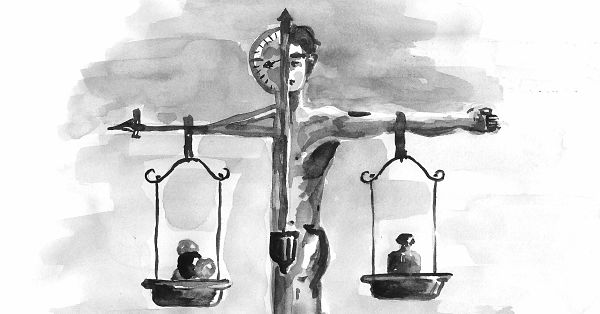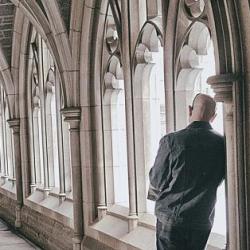by Istvan Kolossvary
Arguably the most commonly cited criticism against religion, and for some reason especially against Christians is that science is based on verifiable facts whereas religion is based on unprovable faith. Jerry Coyne’s new book “Faith vs. Fact: Why Science and Religion Are Incompatible” recently featured in National Geographic andScience News continues the tradition of the new atheists originated in the works of their first evangelist Richard Dawkins and takes aim at religion.
In this blog post I am not going to argue pro or con, I simply want to advocate a straightforward generalization of the scientific method and suggest that it can be used beyond the scope of science, including the arts and religion. The way the scientific method works is quite simple, and it has been amazingly successful for the past five hundred years. Observation of natural phenomena and/or pure theoretical thinking (nowadays aided by computer simulation) lead to ideas that will crystallize in a scientific theory.
I could quote the anecdote with Isaac Newton and the apple, but I’d rather mention Albert Einstein’s observation and ensuing thought experiment riding an elevator. Einstein recognized that the acceleration we feel when stepping on the gas pedal driving our car is equivalent to the acceleration we experience in (unfortunate) free fall. The combined experimental and thought process, then, resulted in one of the earth shattering scientific theories of all time. Given a theory the scientific method calls for experimental verification.
What it means is that scientists apply the theory to make (mathematical) predictions of the outcome of physical experiments that can be carried out in a real setting at the lab. Thus, comparing the results of the physical experiment with the theoretical prediction provides a powerful means for the scientific community to test the theory. The negative is simple, if the results disagree (given that the physical experiment has been carried out correctly, which is no small feat, just think of the 20 mile radius underground particle accelerator facility at CERN in Geneva, Switzerland) the theory is repudiated. The positive, meaning that the predictions match the experimental results (to within a certain statistical tolerance) is not so simple, though, this only means that the experiment has not refuted the theory. It will require numerous experiments over a long period of time to provide reasonable evidence to the point that the scientific community accepts the theory.
Jerry Coyne and the new atheists dismiss religion, because religion is based on faith and not fact. Interestingly, the new atheists, or nobody for that matter dismisses the arts, though. So, how is art tested? What works of art are refuted and what works of art are here to stay? I argue that art is tested by the same scientific method—with people replacing the apparatus in the experiment.
Some would say that the most sensitive experimental device is a pencil standing on its tip; the tiniest push would make it tip over. I would argue, however, that the human person is infinitely more sensitive and is an ideal instrument to experimentally verify artwork. Why do we listen to Mozart and not Salieri, what crystallizes the collection of pieces displayed in the great art museums of the world over time, and what works are delegated to the dungeons of underground storage, once acquired by museum curators as prospective works of art? The masterpieces of art are selected by the same scientific method, by how much they touch the souls of people and the selection process takes a long time, all too often beyond the years of the artist so he or she can enjoy success. The exact same thing in literature, what will determine which novels or poems people read a hundred years after they had been written? Bad literature, bad music, bad paintings are repudiated by the scientific method using people as the experimental apparatus.
Similar in political systems. The ones that people tolerate stay longer and the ones that oppress people will be thrown over, sooner or later. I believe that the same scientific method can be applied to religion. The new atheists don’t seem to understand the difference between God and religion and between faith and religion. We are talking about religion here, the main branches Buddhism, Christianity, Hinduism, Islam, and Judaism with all their factions, and hundreds of other religions. Religion is a shared human response to God’s calling and it is a unique and precious human experience.
Religions are in large part man made, especially in their every day manifestations at temples, churches, mosques, congregations, assemblies, etc., and they change over time. What if not people would be best suited to test them? The scientific method can be applied to religions similar to the arts; the more they touch the human soul and the more they make people agents of good the more they are verified but when they do harm, they are repudiated. It is people who test religion through their ultra sensitive souls far more advanced than any man made instrument. The statement so loudly voiced by the new atheists that religions are irrational, simply does not stand to reason.
 István Kolossváry is a scientist and professor working in the research field of computer simulations of chemical and biological systems. He holds multiple advanced degrees from the Budapest University of Technology and the Hungarian Academy of Sciences. István has been a researcher at various universities and pharmaceutical research labs in Europe and in the United States including Columbia University and most recently a New York based private research organization. He won the 2006 Hungarian Academy of Sciences Book Award in Chemistry for co-authoring Introduction to Computer Aided Drug Design. Over 25 years in his career as a scientist, István has privately grappled with the chasm between science and theology, two disciplines he holds dear. In his debut work The Fabric of Eternity, István shares results from years of scientific inquiry into the works of divine providence and concludes there is solid scientific evidence to suggest that rejecting God and His loving care is against human nature. www.istvankolossvary.com
István Kolossváry is a scientist and professor working in the research field of computer simulations of chemical and biological systems. He holds multiple advanced degrees from the Budapest University of Technology and the Hungarian Academy of Sciences. István has been a researcher at various universities and pharmaceutical research labs in Europe and in the United States including Columbia University and most recently a New York based private research organization. He won the 2006 Hungarian Academy of Sciences Book Award in Chemistry for co-authoring Introduction to Computer Aided Drug Design. Over 25 years in his career as a scientist, István has privately grappled with the chasm between science and theology, two disciplines he holds dear. In his debut work The Fabric of Eternity, István shares results from years of scientific inquiry into the works of divine providence and concludes there is solid scientific evidence to suggest that rejecting God and His loving care is against human nature. www.istvankolossvary.com














